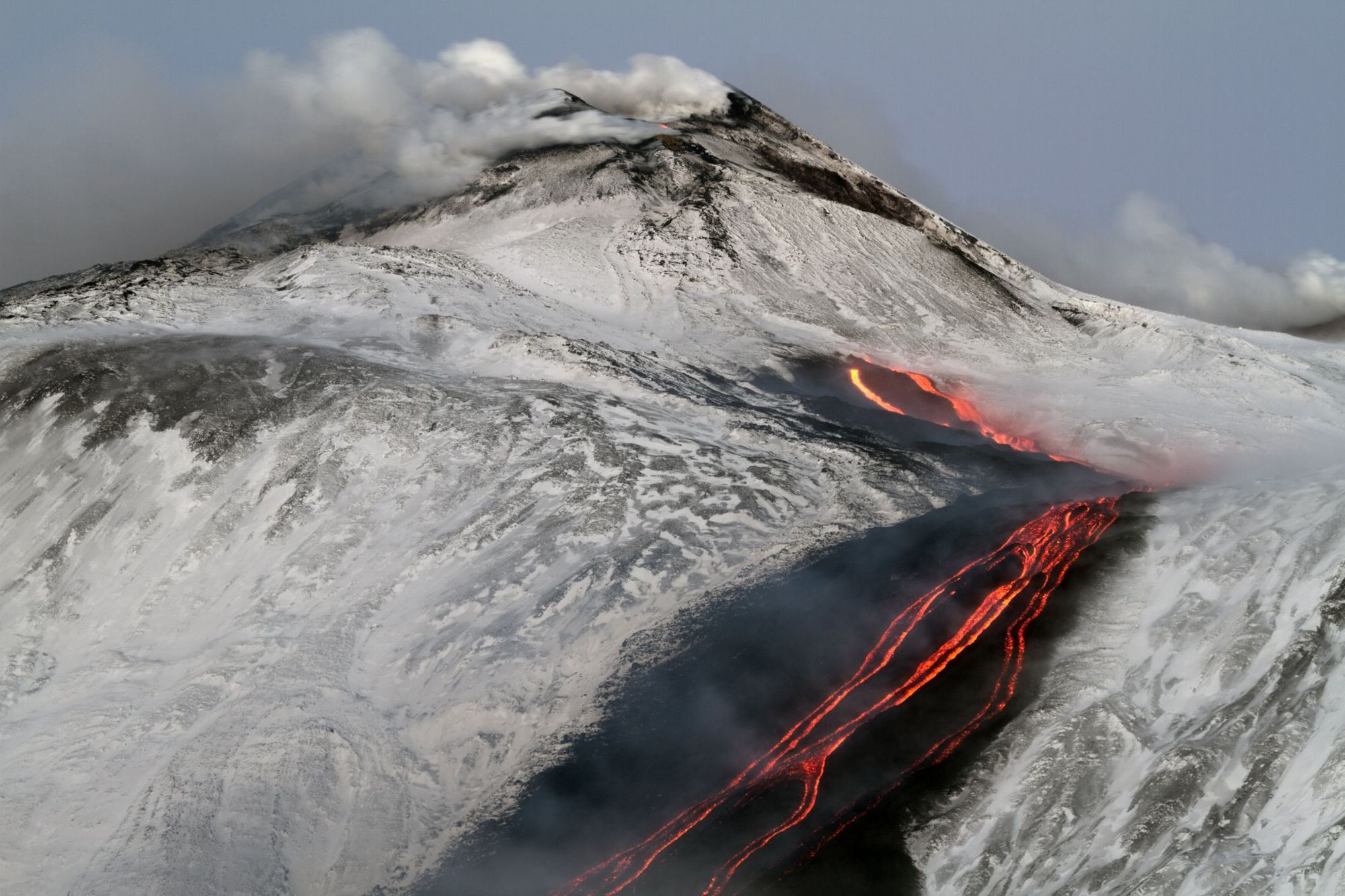Mount Etna is a UNESCO World Heritage site, and the 3,357m high point of Sicily. Famed for being one of the most active volcanoes in the world, it's also Europe's highest, and the mountain dominates the Mediterranean’s largest island of Sicily. Visible from almost every corner of Sicily, Etna sits on the island's east coast, where it towers over the ancient port city of Catania.
There's a beauty in the juxtaposition; the fiery might of the mountain and the white chill of the snow...
Since 1800, there have been over 130 eruptions. The mountain is where fire meets snow and lush green tree lines meet black lava flows. It's called Mongibello, meaning ‘beautiful mountain’ by locals. Climb it and, even if you don’t make it to the summit, you’ll earn unbeatable views. Think lava flows and otherworldly dune landscapes on the mountain, far-reaching views over the vineyards, hills and towns of Sicily below, exaggerated by the huge height difference between Etna and every other hill on Sicily, and ocean views to the Aeolian Islands and Calabria beyond.

The climb is usually possible from April-September (without mountaineering equipment), though that can change depending on snowfall and the extent of climbing possible is always dependent on volcanic activity. Visibility, as on all mountains, also plays a part, with clouds tending to build up as the day goes on.
The summit of Etna consists of four craters - Bocca Nuova and Voragine in the centre and others in the northeast and southeast. On the mountain you can see them bubbling and you can even see some explosions. The volcanic ash is rich in nutrients (hence the nearby towns and villages) and olives, apples, pears and pistachios are amongst the foods grown in the area. If you're lucky, you'll spot a golden eagle flying through the protected park, or a porcupine bobbling along.
The two standard starting points for the ascent are Rifugio Sapienza in the south and Piano Provenzana to the north (both of which are also home to ski resorts). The southern side is busier, while the north is the wilder and quieter side of Etna.
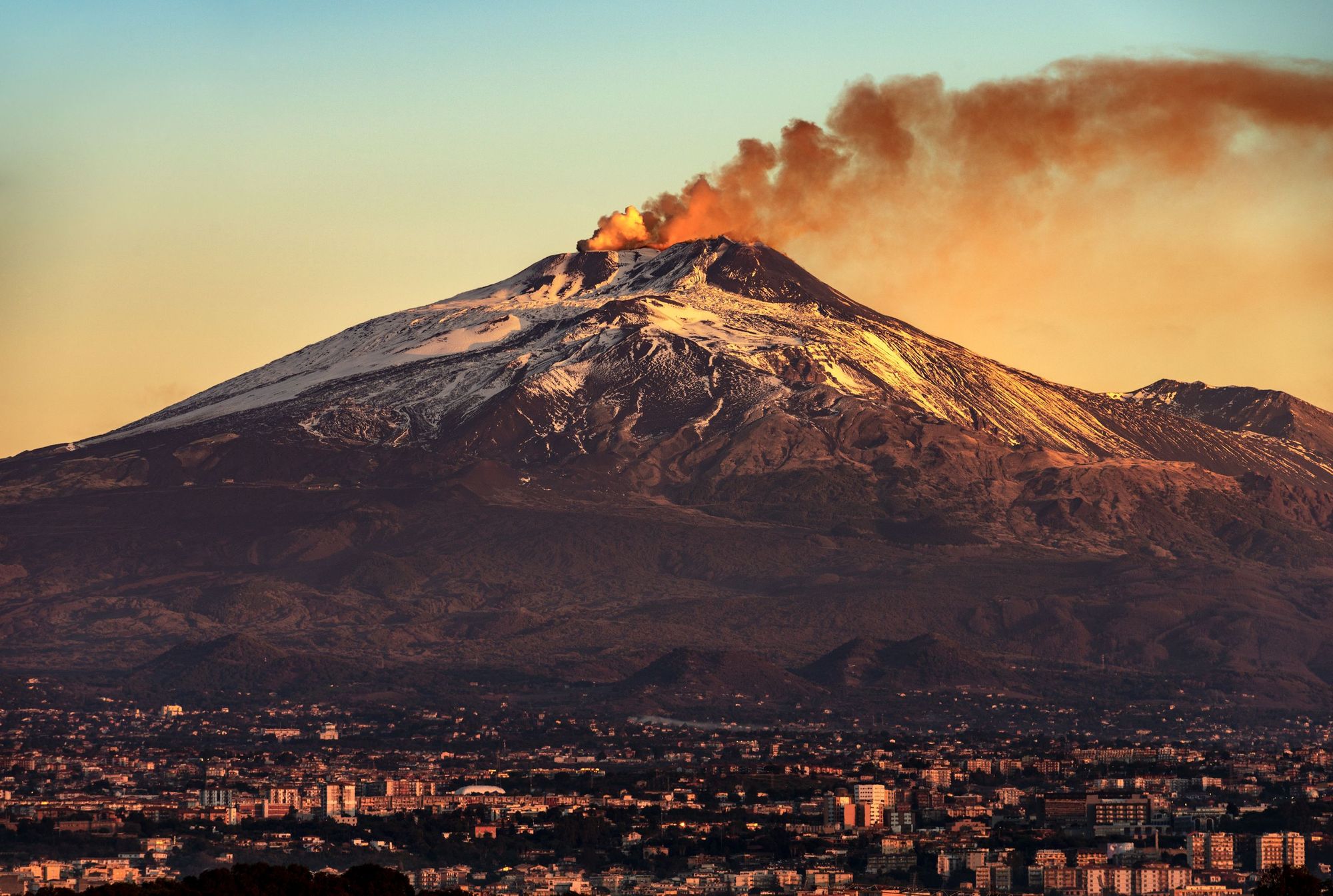
Whichever route you choose to climb, a guide is strongly advised, owing to the expert local knowledge required not only to navigate to the summit - which is not waymarked - but to mitigate the risks of climbing an active volcano which spits toxic gases, which drift with the wind. It’s not uncommon for individuals without a guide to require rescuing in poor conditions. When there is snow, the dangers are enhanced. Ravines can be concealed, and without a guide, you can become lost.
Etna Park Authority often set limits on how high you can climb, with excursions to the higher levels of Etna only permitted if accompanied by Volcanological guides.
That said, once you’ve got a guide, mountaineering experience isn’t required to climb Etna (except in winter). On the southern side, there are cable cars which will whisk you up to 2,500m, and then a 4x4 bus will carry you even further up, to 2900m. On the northern side, the hike from Piano Provenzana usually involves a jeep to Piano delle Concazze, at 2,825m, and a two hour hike from there.
In this feature, we’ll focus on climbing to the summit of Etna and detail some of the best things to do in Etna in winter, besides the summit. It’s important to note that in certain conditions, namely when the volcano is particularly active, it is not possible to reach the summit of Mount Etna for obvious safety reasons.
Where is Mount Etna?
Mount Etna sits on the east coast of Sicily, the largest island in the Mediterranean, which is just off the toe of the Italian mainland’s boot. The closest city is Catania, an hour drive from Rifugio Sapienza, where you can take the cable car up the mountain.
Is Visiting Mount Etna Safe?
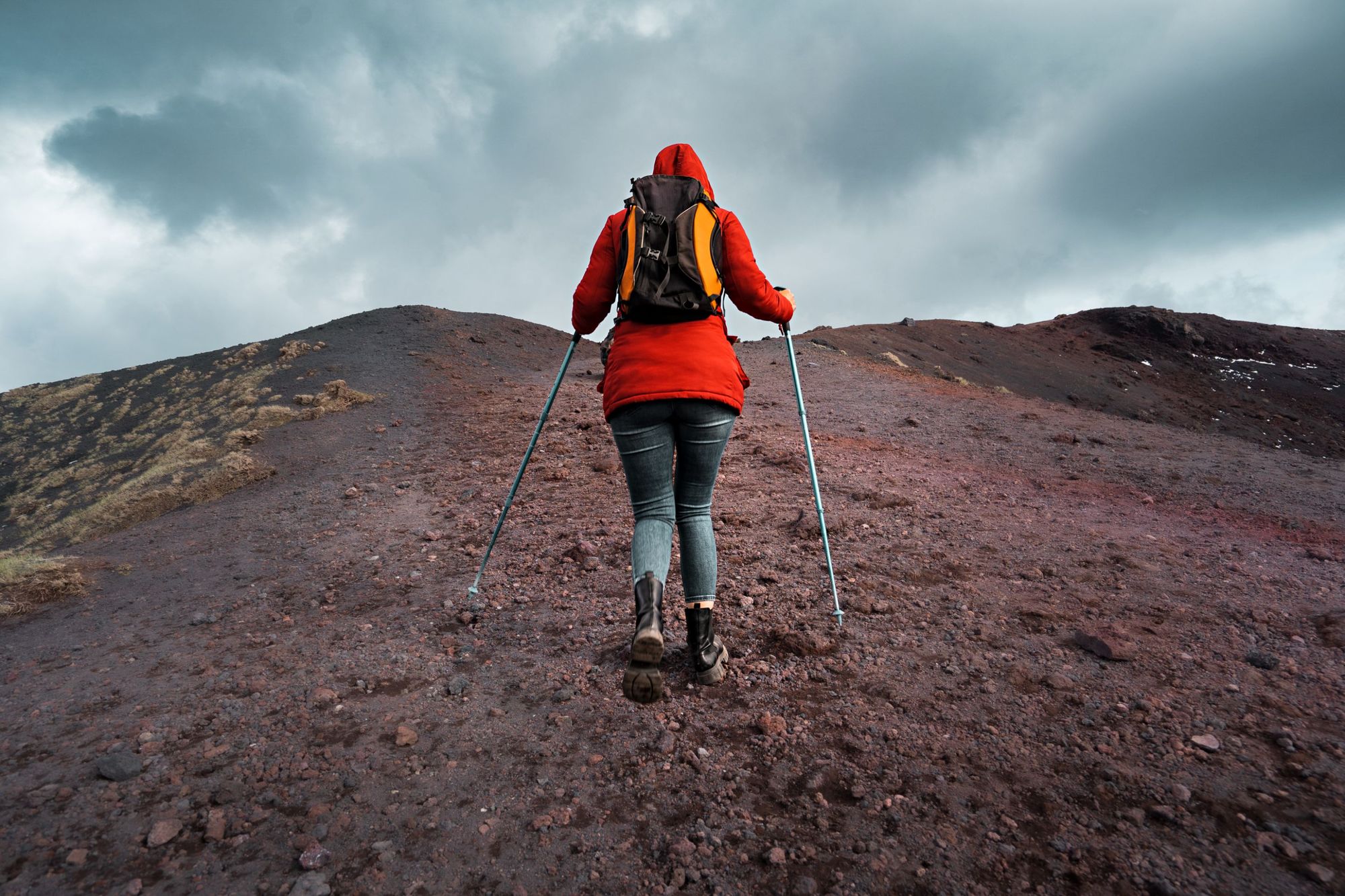
While Etna is an incredibly active and unpredictable volcano, it’s also very closely monitored. So, while you can’t predict when it will next erupt, you can be sure that every tremor of the mountain is being recorded and communicated in real time to the National Institute of Geophysics and Volcanology of Catania.

Etna safety beyond this is really down to the visitor. This is why we do not recommend solo hiking on Mount Etna, unless you are a local expert. Due to the unpredictable nature of the volcano, civil authorities can impose altitude restrictions at any time. When areas of the mountain are off limits due to conditions, do not enter them.
It should be emphasised that the rim of summit craters should not be approached. When there are accidents on Etna, it is often because this rule has been broken.
Any mountainous landscape needs to be respected, and all come with inherent danger. That is heightened when you’re on a volcano, but listen to your expert guide, and stick to the safety measures, and Etna is a safe place to climb.
How Hard is Climbing Mt Etna?
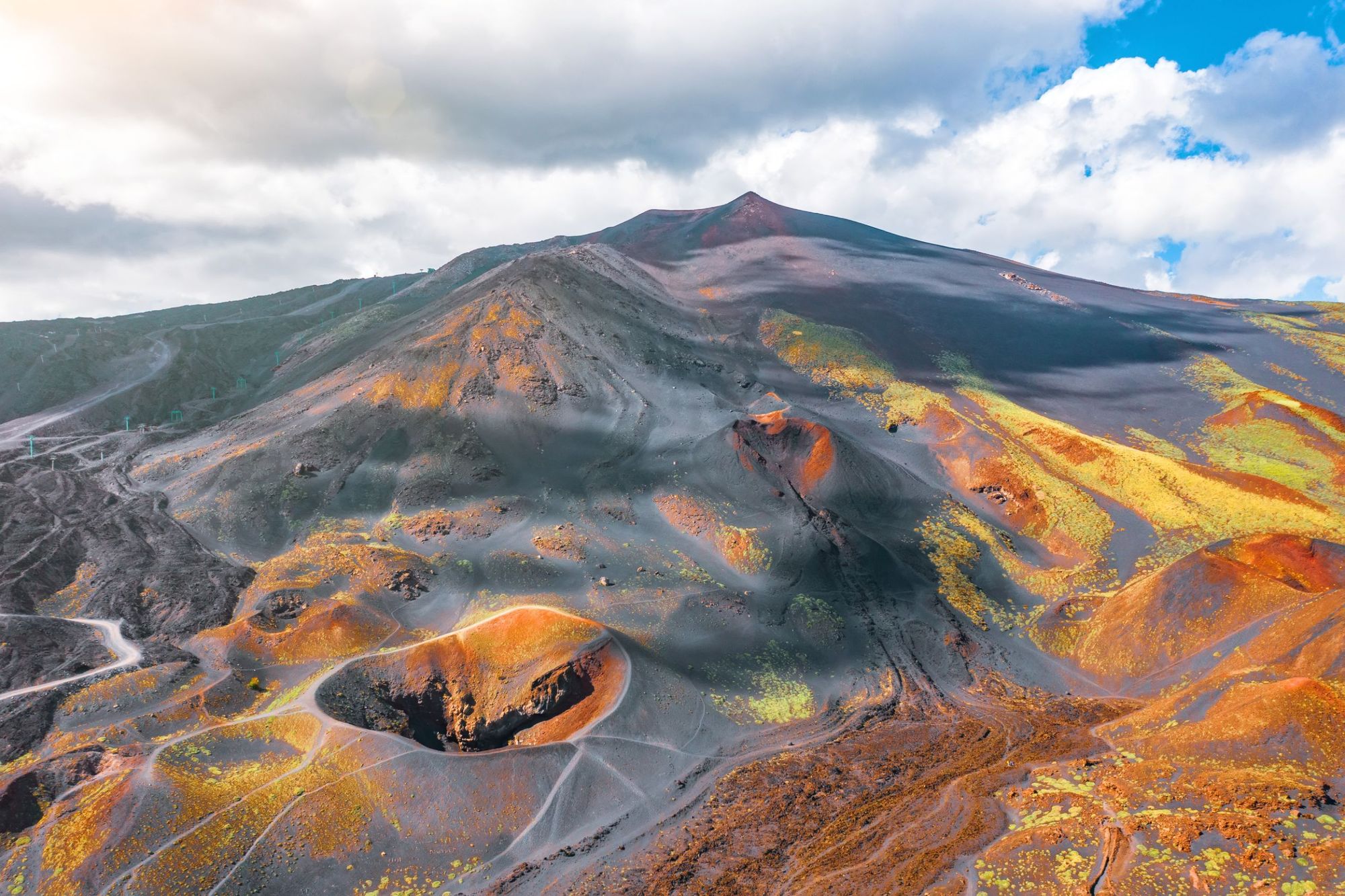
This largely depends on where you climb from, and what season you climb in. If you hike from Rifugio Sapienza rather than taking the cable car, for example, that would be an extremely big day out. If you take the cable car and bus to the highest available point (as most do), then the summit hike is much more achievable - although it will still take a five or six hour walk.
It should be noted that if you climb Etna multiple times over the course of a few years, the route you’ll take to the summit would likely change; the eruptions can redirect paths, as can the weather and conditions on the day. This is why an expert guide really is so crucial here. It’s also quite common for guides to give out protective helmets to climbers, increasing the safety.
Vertigo can be an issue for some people as well, owing to the tight ridgeline climbs.
What you should note is that there is a lot of hiking on volcanic ash and sands, which can be quite soft underfoot over a prolonged period of time. A pair of hiking poles is a good idea.

Don’t underestimate the cold temperatures at the top of the mountain, too. Even in summer, it’ll be a lot colder at the top of the mountain than in the towns of Sicily, and in winter, well, the fact that there are two ski resorts on Etna is the tell for what sort of gear you need to bring. In winter, this is a mountain which does require mountaineering skills and technical equipment such as crampons and ice axes, and the chance of summiting can be easily impacted by the snow, wind and ice conditions - as well as volcanic activity (which is true year-round). The area of the summit craters on Etna is often off limits at varying times in the year, due to the risk of eruption.
If you can’t climb to the summit (or even if you can), we’d recommend exploring the lower slopes on the north side of Etna. In terms of off-the-beaten track experiences and highlights, it’s a real winner. There are excellent, accessible lower routes which show off the beauty of the volcano - from the lava caves and extinct craters to the birch forests and multi-coloured moonscapes.
Hike to the Summit of Mt Etna from Rifugio Sapienza (Etna Sud)
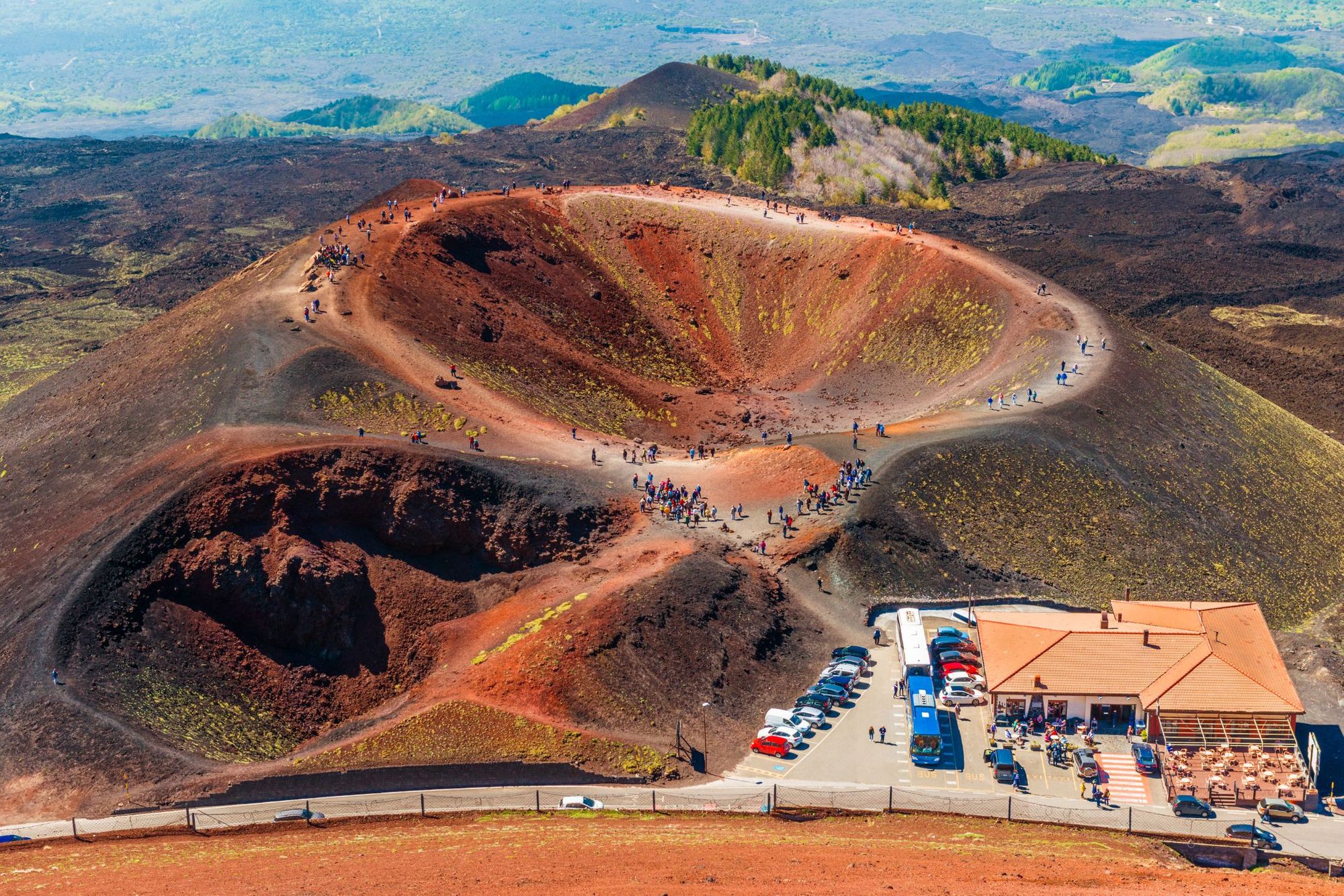
Before setting off from Rifugio Sapienza, explore the Silvestri craters nearby, two inactive craters formed as a result of an eruption in 1892. You'll find a good bit of infrastructure here - a cafe, restaurants, information points and so on. It’s also your last chance to use a toilet - and you've got a four hour round-trip ahead.
The cable car will then take you up to Montagnola, a crater at 2500m which dates back to an eruption in 1763. The cable car is old but reliable. There have been attempts to build new cable cars, but each has been destroyed by an eruption from Etna. The 4x4 bus to 2,920m (a height which can change depending on eruptions), will then take you old lava flows which have now set, and provide extremely scenic views of the volcanic landscape.
The hike will then take you over the volcanic flats, with steam rising around you and the whole of Sicily below. The higher you get, the more snow you will see. Even in summer, the snow can be deep. There are some narrow ridgelines to navigate, notably around the high craters, but you’ll be glad for the warmth the craters exude - a stark contrast to the harsh winds that can also whirl around the summit. The final ascent is steep but manageable.
Hike to the Summit of Mt Etna from Piano Provenzana (Etna Nord)
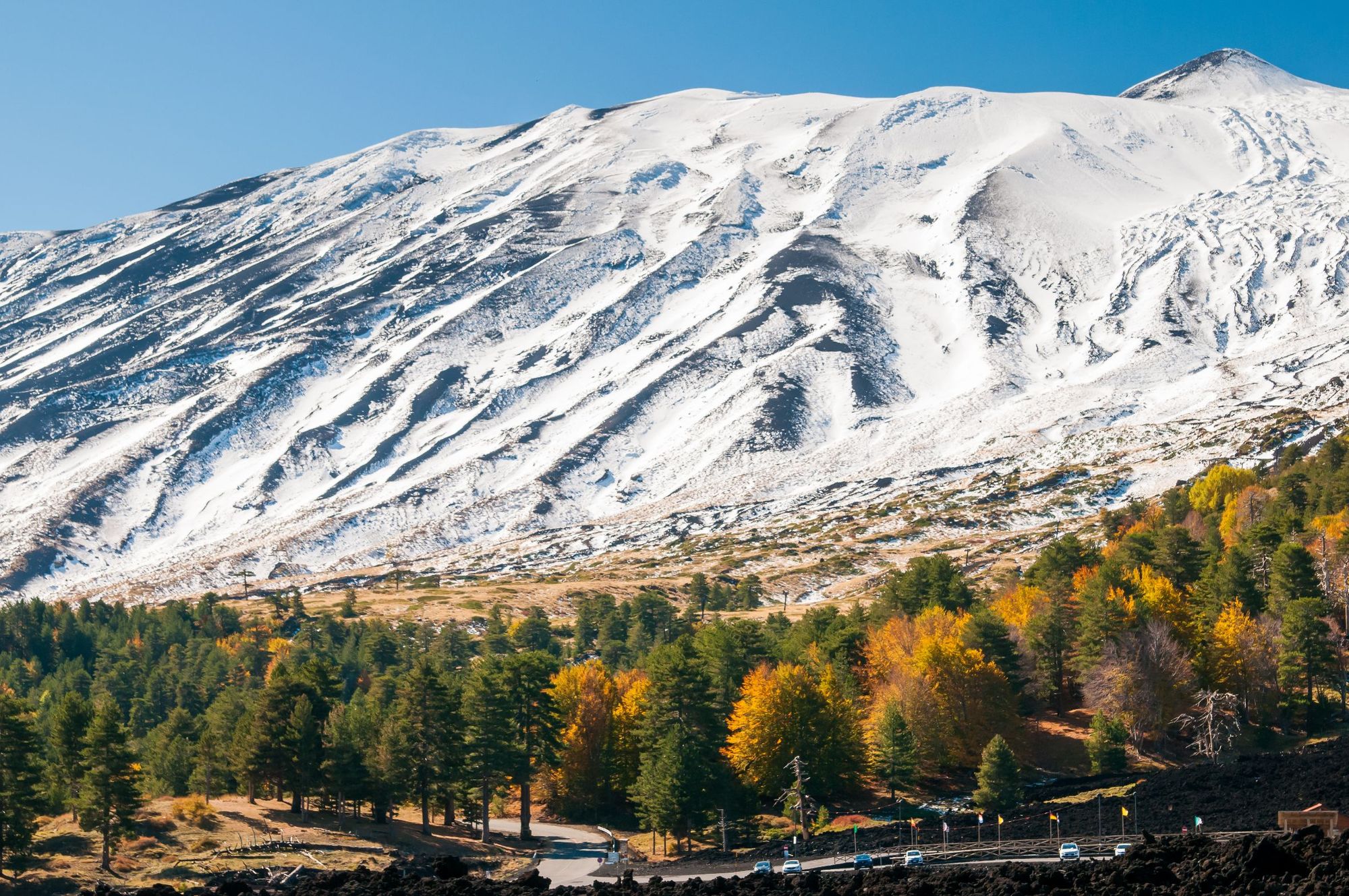
There's no cable car on the north side of the mountain, so it would be an eight to 10 hour round-trip from the peaceful village of Linguaglossa on foot. Before leaving, you could visit the Mueso Francesco Messini, dedicated to the sculptor Francesco Messina, or explore the hazel groves and pine forests surrounding the town.
With a guide, this route usually begins with a jeep ride up to around 2825m on the mountain, shortening the hike substantially. From there, it’s a 5km uphill walk to the summit, through the aforementioned volcanic landscape.

You’ll ascend just under 500m to reach the central crater of Etna, at 3,300m. We're keen to advise again - do not approach the rims of the summit craters; the risk is obvious and huge. The walk around the crater is as described in the previous entry, across volcanic ashes and sands, and including some vertigo-inducing climbs. The descent from here will take you to Piano delle Concazze, near the Volcanological Observatory, and then to your finish point.
If you take this route, it’s likely that you’ll encounter a lot less people than if you take the hike from Rifugio Sapienza on the southern side of Mount Etna.
Climbing Mt Etna in Winter
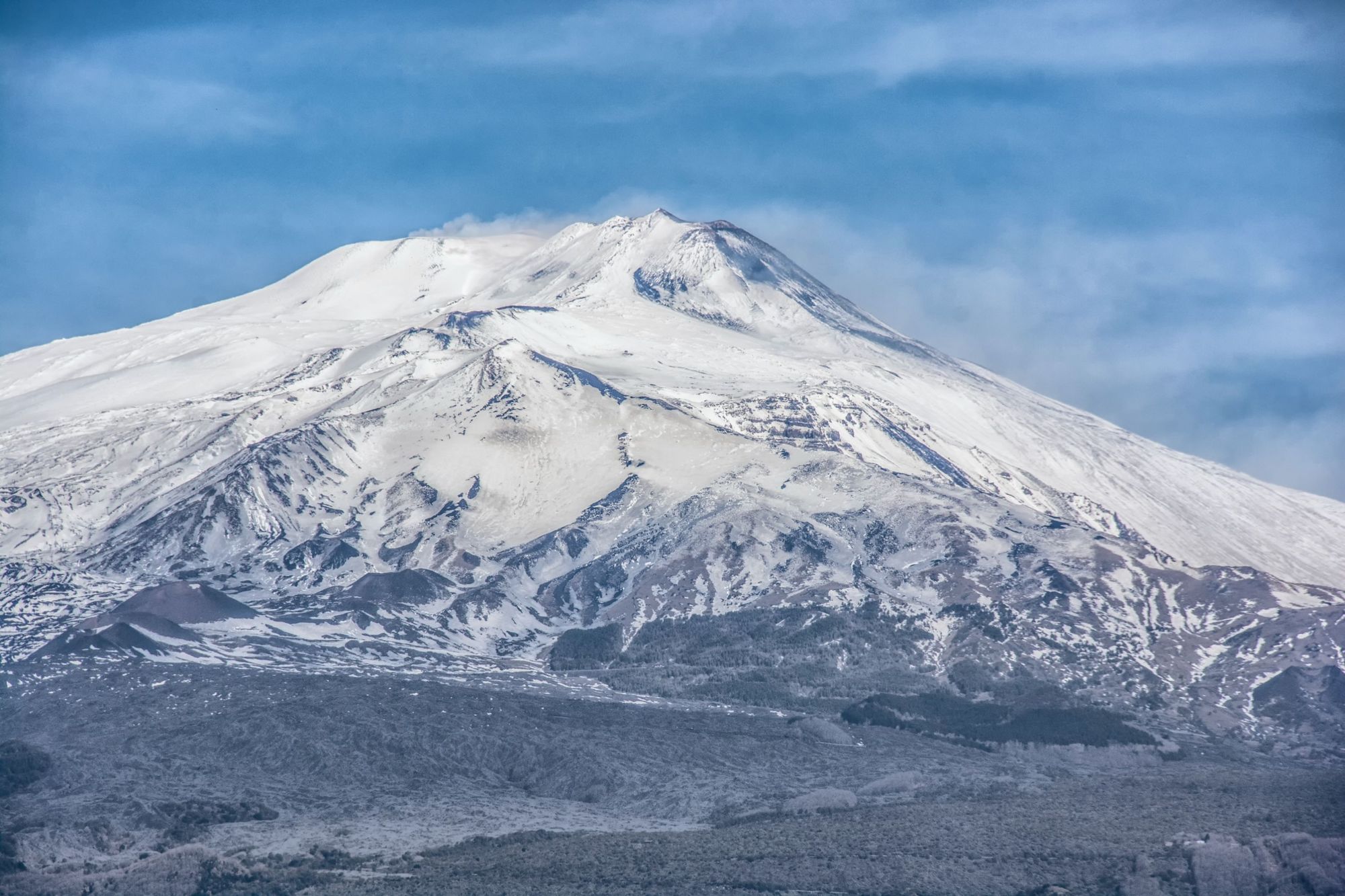
As well as a guide, climbing Mt Etna in winter can require technical mountaineering skills and specialist equipment - ice axes, crampons etc. - and the knowledge of how to use them.

The same routes largely apply to Mt Etna in winter, though in abundant snow, some companies use snowmobiles to head part of the way up the mountain. Expect, and prepare, to be hiking in deep snow. While this is possible, this climb is demanding, and there are arguably better ways to explore Etna in winter rather than aiming for the summit. We’ve listed a few of those below.
Other Winter Hikes & Activities on Mount Etna
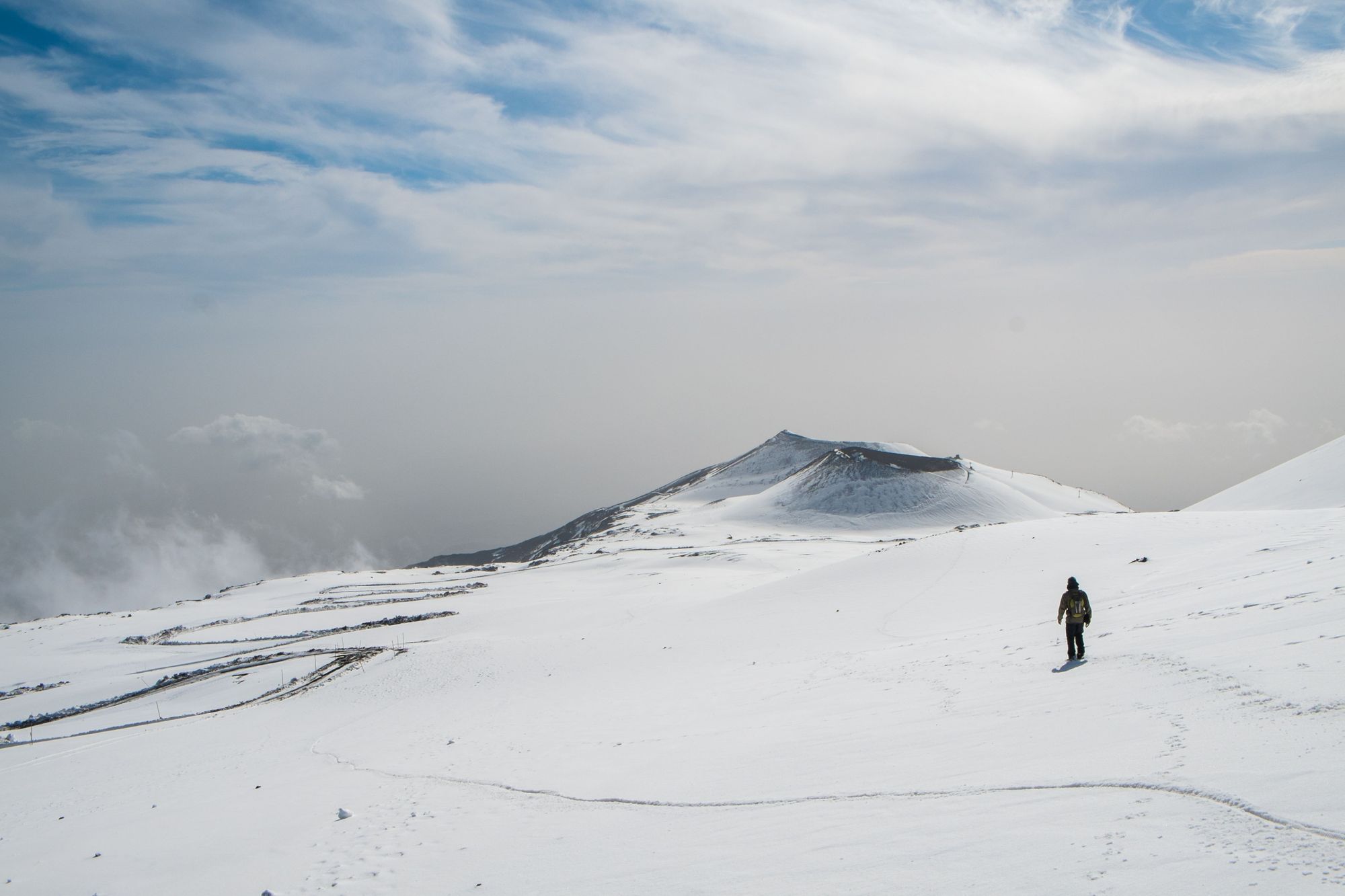
Truth be told though, some of the best routes on Etna in winter make for better days out than a summit attempt on the mountain. Etna covers 19,237 uninhabited hectares, so there's a lot of terrain to explore - and a beauty in the juxtaposition of the nature; the fiery might of the mountain and the white chill of the snow.
Take a snowshoe on the eastern flank of Etna and you can reach the panoramic viewpoint of the Valle del Bove, at 2095m, a stunning caldera up to 900m high in places, surrounded by lava and tufa. This is where a lot of the lava from eruptions flows into, and you'll see that the treeline abruptly cuts out when it meets the enormous flow of dried lava. You can also reach the moonscapes of Monte Frumento delle Concazze, one of the largest secondary craters on Etna.
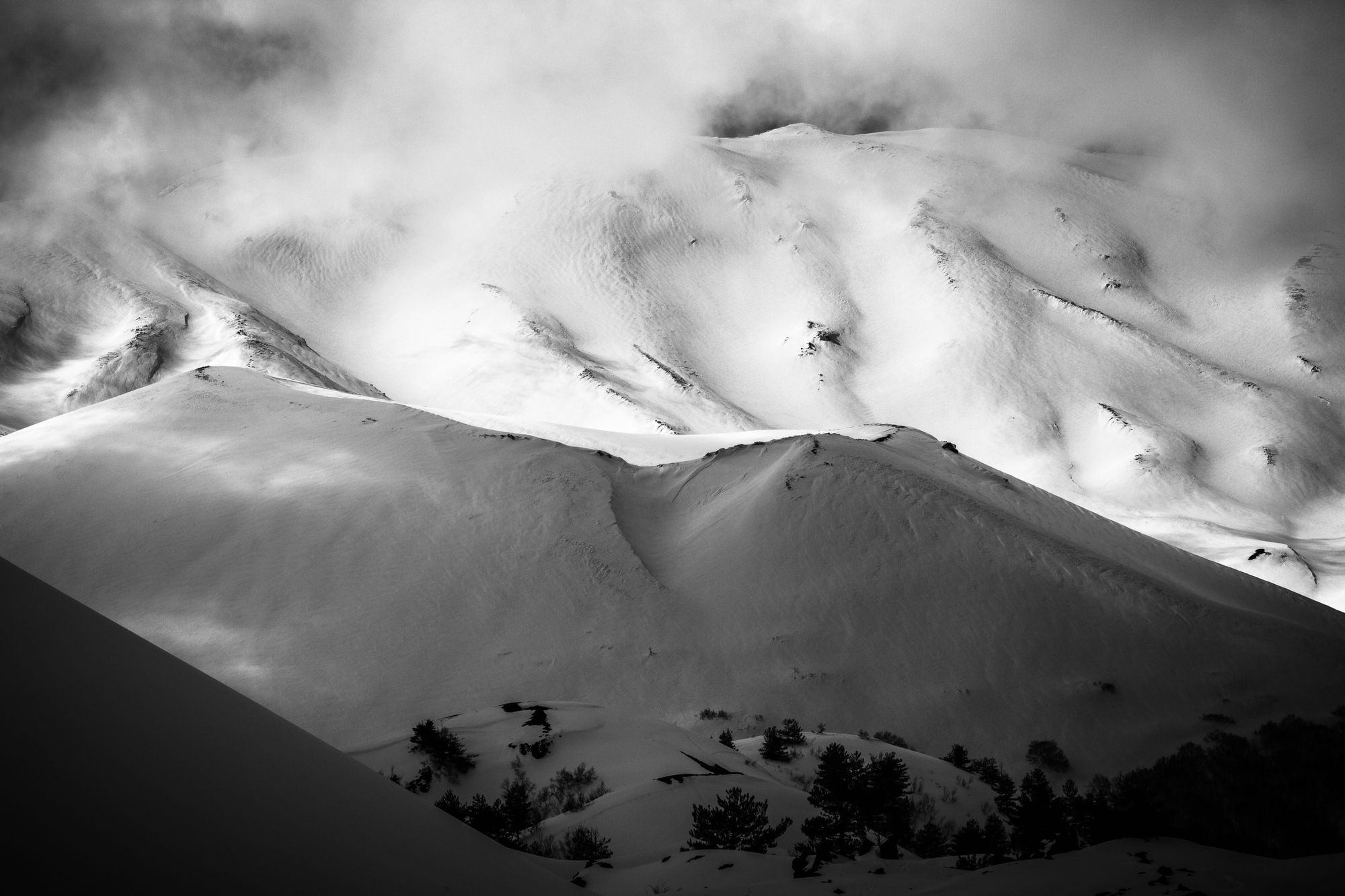
Snowshoe the famous Pista Altomontana and you can explore the famous mountain at an average altitude of 1800m. The route is a half-circle hiking trail around Etna, stopping by caves and craters, and travelling through petrified forests, lava plains and volcanic cones. We’d particularly recommend a stop at the Grotto of Raspberries - one of the longest lava flow tunnels (also sometimes called caves) on Etna. It was so-named in 1965, after a group of hikers from the Italian Alpine Club discovered the grotto, with lush raspberries growing inside.
Of course, there are also ski resorts at both Nicolosi (Etna Sud) and Piano Provenzana/Linguaglossa (Etna Nord). Combine the lot for the ultimate winter exploration.
When is the Best Time to Hike on Mt Etna?
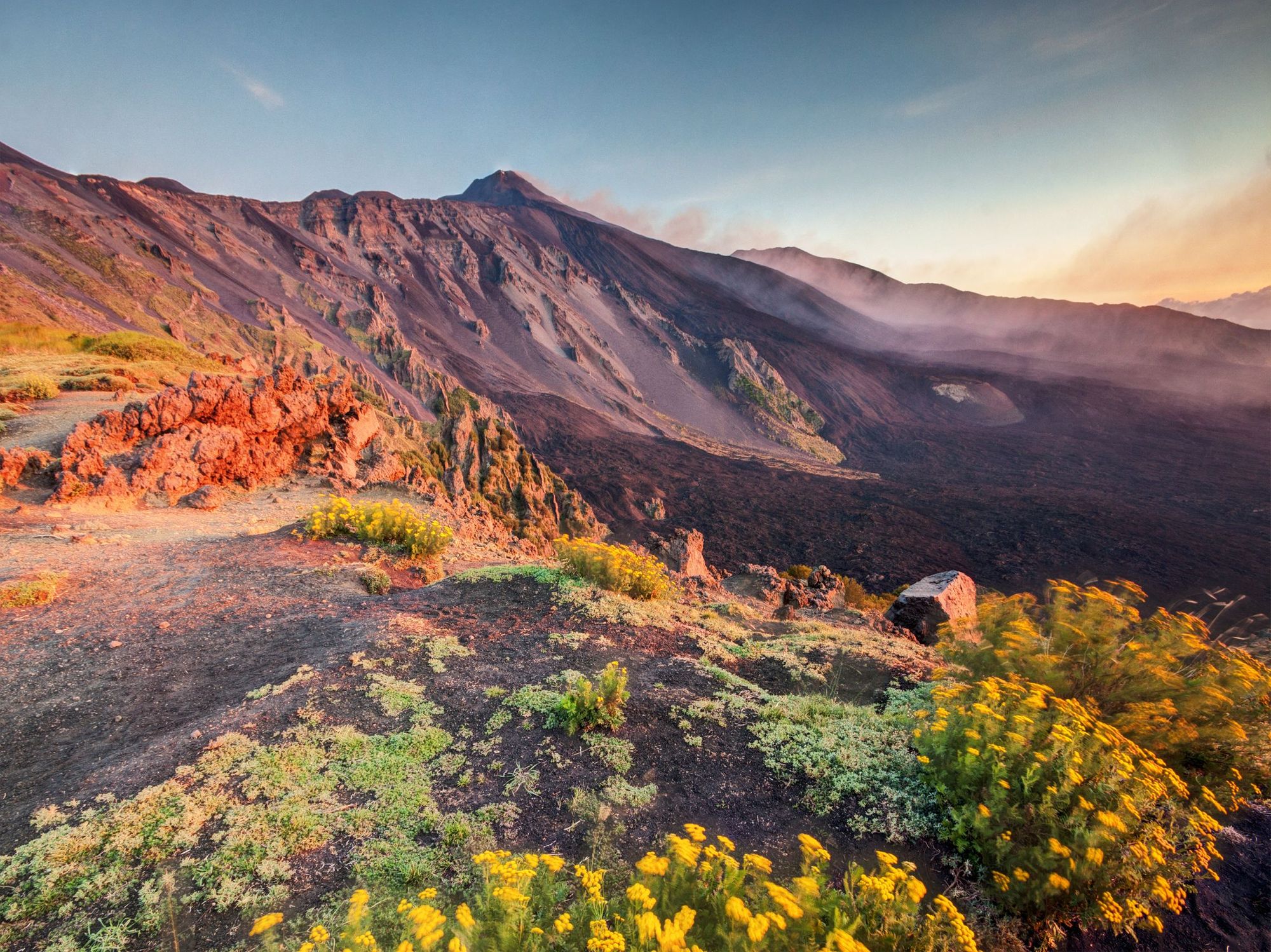
Mount Etna is a year-round destination for adventure; so really, this depends on what you want to do, and kind of landscape you want to see.
Of course, summer will be warm and crowded, while there will be snow at the top in winter, and it will be substantially colder, making the hike more challenging.
The shoulder seasons are in April and September, and in Spring, you also have the bonus of the flowers coming out.
Between January and May, Etna is usually covered in snow, especially at altitudes above 1500m. Dress appropriately for the mountainous landscape, and remember that there will be a notable difference - around 10°C - between the temperature at the base and summit of the volcano.
Inspired? Hike Mount Etna in winter, or clamber to the summit when the weather is warmer!

